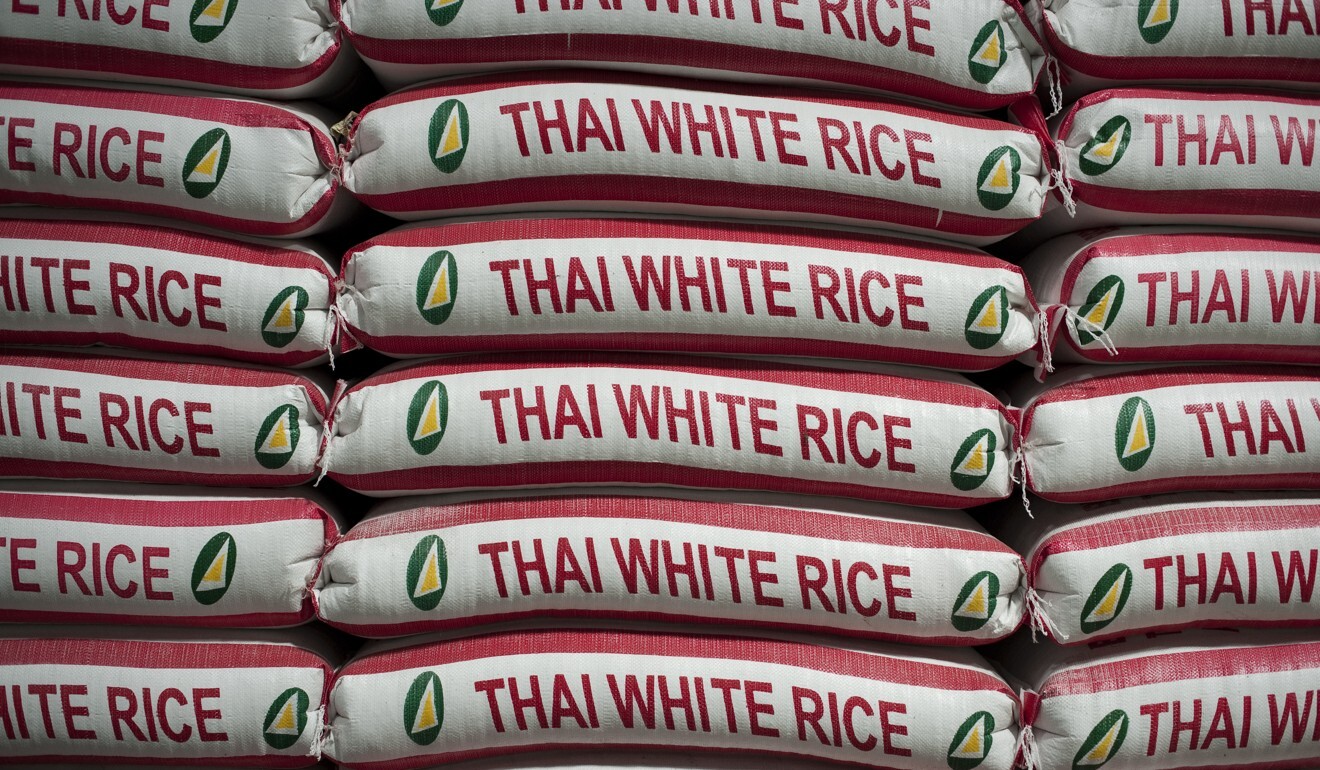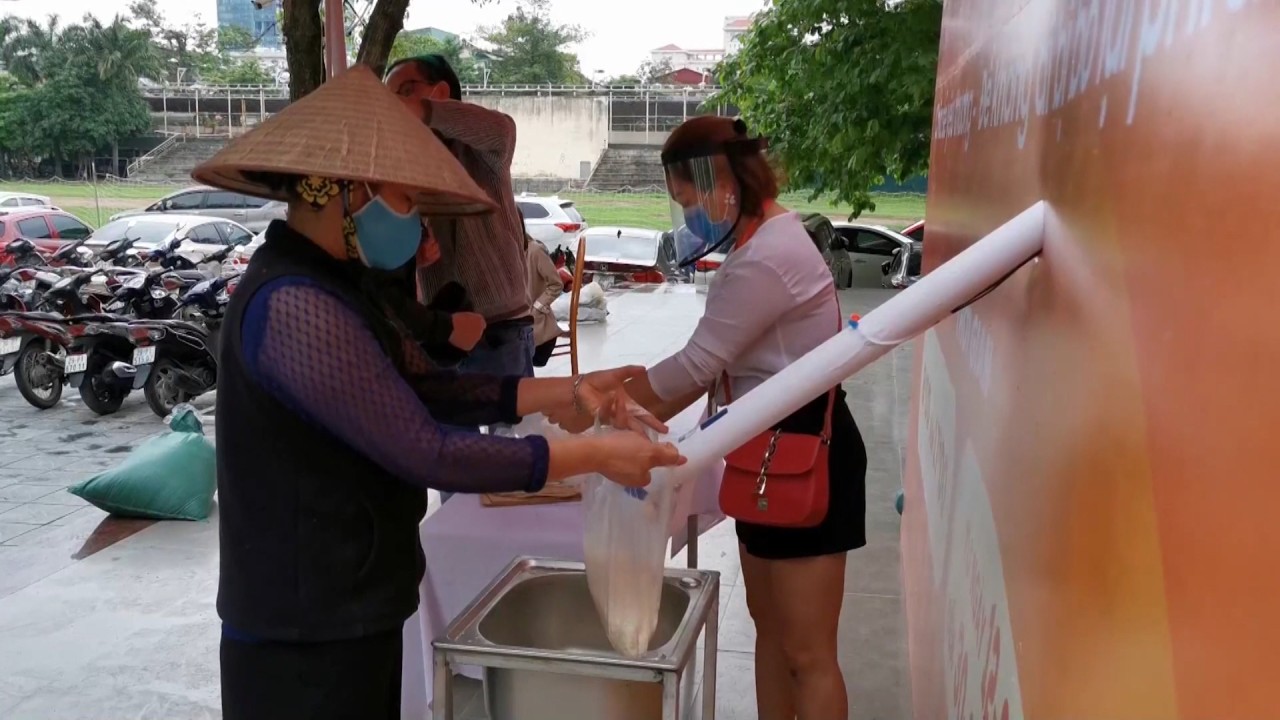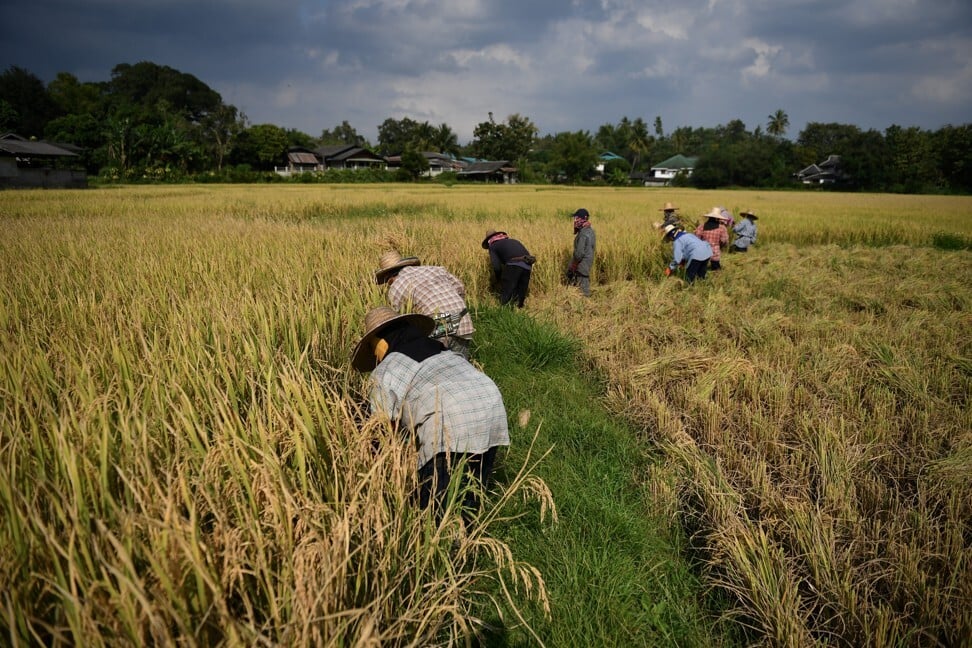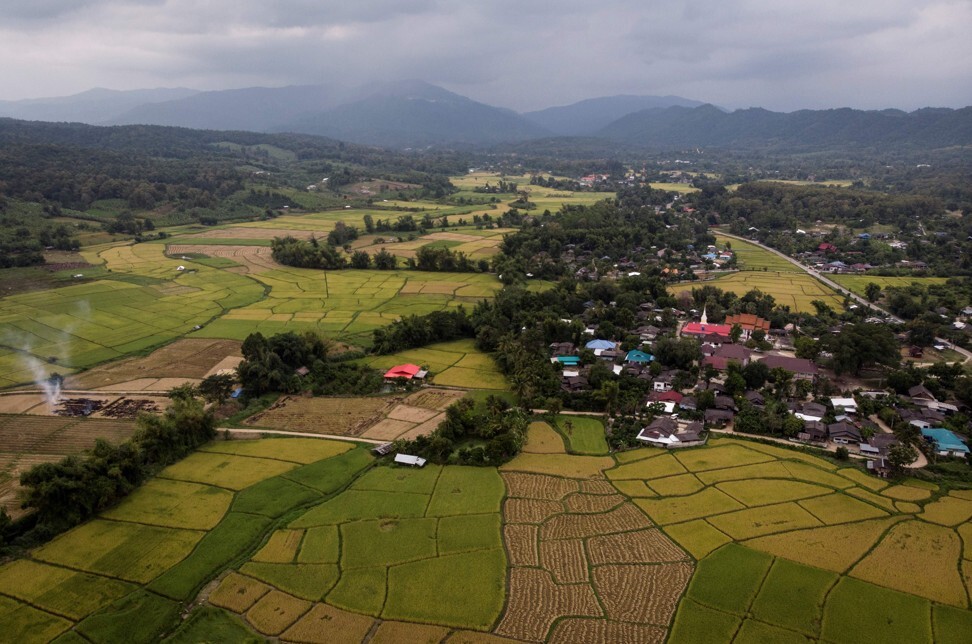
Can Thailand save its rice bowl, or will China, India and Vietnam eat it for lunch?
- Jasmine rice, once the star of Thailand’s grain exports, is facing the heat from cheaper varieties in the region
- As the country cooks up a plan to regain world dominance, observers say more incentives and support for farmers are needed
Thailand’s famous jasmine rice claimed yet another top prize on the world stage this month, marking the sixth such honour the World Rice Conference has bestowed on the fluffy, fragrant and full-bodied grain since 2009.
The “Khao Dawk Mali 105” – a code name for the most renowned Thai jasmine rice variety – defeated rivals from Cambodia, China, the United States and Vietnam with “its combination of aroma, texture, and flavour”, said the judging panel at the annual forum for rice suppliers and policymakers.
But the recognition caps a difficult year for Thailand, which is set to see the lowest rice exports in two decades due to falling global demand caused by the coronavirus pandemic, the baht’s strength and export competition from the likes of India, Vietnam and China.
In 2015, India dethroned Thailand as the world’s top rice exporter, a position it had held for 35 years. India is set to export about 14 million tonnes of rice this year, up from 9.9 million tonnes last year.
This year, Thailand fell to No. 3, with Vietnam snatching the second spot. From January to October, Thailand exported 4.4 million tonnes of rice, down 31 per cent from a year before. In comparison, Vietnam shipped 5.3 million tonnes of rice in the same period, down 8 per cent from last year.
Thailand’s rice exports to China, one of its biggest markets, also fell by 39 per cent this year.
While China remains a major market for Thai jasmine rice, known as hom mali, Charoen from the Thai Rice Exporters Association said Thai growers had in the past two years been badly affected by a drought that caused the prices of general white rice to spike, prompting China to seek other suppliers. It recently imported rice from India for the first time in decades to substitute unstable supplies from Southeast Asia, widening the competition gap even further.
While China has traditionally been a rice importer, its production expansion could threaten Thailand, said Chookiat Ophaswongse, honorary president of the Thai Rice Exporters Association. China last year shipped 2.7 million tonnes of rice and is this year expected to export 3.2 million tonnes.
Thai white rice this year also lost out to cheaper grades offered by Vietnam in key Asian markets like the Philippines. China was also beating Thailand in key African markets with cheaper prices.
However, sales of Thai premium-grade jasmine rice rose by 63 per cent this year, benefiting from panic buying in wealthier markets like Singapore, Hong Kong, the US and Canada, Reuters reported in July.

02:12
China can expect bumper 2020 harvest despite bad weather and floods, officials say
Thailand has been mulling ways to avert its rice export crisis, this year releasing a five-year plan to regain world dominance in the rice trade.
The strategy includes accelerated support for the development of 12 new rice varieties, such as hard- and soft-textured varieties of white rice, several more hom mali varieties, and two varieties of high-nutrition rice.
In a November report, Bloomberg said the RD79, a variety of soft-grain rice, could be Thailand’s new hope down the line, with its supple texture and long grain similar to jasmine rice, minus the fragrant scent. It could be marketed at a cheaper price than the hom mali, while being more resistant against disease and drought.
According to Charoen, the new policy has given hope to an industry long affected by Thailand’s political instability, which has prevented a long-term rice policy to be crafted.
But some analysts and rice growers have suggested more can be done, proposing for policymakers to create incentives to increase crop yields and diversify grain varieties to increase competitiveness.
The hom mali is a speciality but its expensive price tag means it is not very competitive in the world market, said Aat Pisanwanich, an associate professor in economics at the University of the Thai Chamber of Commerce. This is especially in the face of rivals such as the Chinese Wuchang rice and the Cambodian Phka Rumduol, both premium aromatic grains that are priced lower than Thai jasmine rice.
Maintaining the quality and aroma of hom mali, which Aat said had lately been criticised among buyers as being less fragrant, would help raise its marketing image, reputation and trust from consumers, and it begins with soil management and farmers’ access to seeds.
In Vietnam, “the whole rice industry has been overhauled in the past decade, with the aim of using less fertilisers and chemicals while increasing crop yields”, he said.

Nachon Trongjai, a “105” grower in Thailand’s northeastern Surin province, echoed Aat’s recommendation.
The 44-year-old farmer’s grains have won various national awards over the years, making the northeast region one of Thailand’s most important jasmine rice farming zones.
But the farmers there are among the most vulnerable, often with insufficient means to access market, funds, seeds and technology, Nachon said.
Decades of focusing on meeting the targeted crop yields has led to the use of chemical fertilisers which have jeopardised the Thai rice products in the world market, threatened soil fertility and increased costs.

01:25
Vietnam entrepreneur sets up free ‘rice ATM’ to feed the poor amid coronavirus lockdown
Nachon, the head of a local group of organic farmers that offers a price-guarantee scheme for members, said access to seeds – especially of varieties that meet the market demands and ones that can produce substantial yields – would help farmers increase their income and improve their livelihoods. In the long run, consistent yields would sustain Thailand’s rice industry and its position in the global market as a whole, she said.
Months of battered exports have led to falling prices of rice domestically due to oversupply. Thailand is currently launching a price-guarantee scheme which would cover 4.5 million farmers until at least mid-2021.
But the rice industry would have to find a strategic way forward, said Aat from the University of the Thai Chamber of Commerce.
The signing last month of the Regional Comprehensive Economic Partnership (RCEP) – a mega trade deal involving the 10 Asean nations, China, Japan, South Korea, Australia and New Zealand – will lead to increased trading activities between China, the world’s biggest rice producer and consumer, and countries on its borders like Myanmar and Vietnam, whose advantages over Thailand include the cheaper logistical and labour costs, he said.



